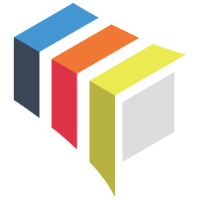QUESTIONS? CALL:
+1 (833) BOODSKAp
Remote Patient Monitoring with Boodskap's IoT Platform
PRODUCT DESCRIPTION
- Remote Patient Monitoring (RPM) using IoT technology leverages wearable devices to continuously monitor patient health metrics such as heart rate, blood pressure, glucose levels, and more. This practice enables healthcare providers to keep track of patients' health in real-time, reducing the need for frequent hospital visits and ensuring timely medical interventions. Boodskap's IoT Platform as a Service (PaaS) offers comprehensive solutions for remote patient monitoring, integrating various sensors and devices to deliver actionable insights and predictive analytics.
- Boodskap’s IoT platform allows healthcare providers to collect, analyze, and act on data from various wearable devices. The platform’s robust data analytics and visualization tools enable real-time monitoring of patient health metrics, helping to improve patient care, enhance chronic disease management, and ensure timely interventions.
- Wearable health monitors (e.g., smartwatches, fitness trackers)
- Wearable ECG monitors
- Glucose monitoring devices
- Heart Rate Sensors: Monitor heart rate continuously to detect anomalies.
- Blood Pressure Sensors: Track blood pressure levels to manage hypertension.
- Glucose Sensors: Monitor blood glucose levels for diabetes management.
- SpO2 Sensors: Measure blood oxygen saturation to monitor respiratory health.
- Temperature Sensors: Monitor body temperature for fever detection.
- BLE (Bluetooth Low Energy): Used for short-range, low-power communication between wearable devices and the central IoT platform.
- Zigbee: Ideal for creating a mesh network of wearable sensors within a home or healthcare facility.
- NB-IoT (Narrowband IoT): Provides robust connectivity for wearables, especially in remote or challenging environments.
- MQTT (Message Queuing Telemetry Transport): Lightweight messaging protocol used for real-time data transmission between sensors and the IoT platform.
- A diabetic patient using Boodskap’s IoT platform wears a smartwatch and a glucose monitoring device equipped with heart rate, blood pressure, glucose, SpO2, and temperature sensors. These sensors collect data continuously and transmit it via BLE to the Boodskap platform. The platform analyzes the data, providing insights into the patient’s health metrics and alerting healthcare providers to any anomalies. The patient and their doctor can view these insights on a dashboard, enabling timely adjustments to treatment plans and ensuring better disease management and health outcomes.
- Improved Patient Care: Provides real-time insights into patient health metrics, enabling timely medical interventions.
- Chronic Disease Management: Helps manage chronic conditions like diabetes and hypertension through regular monitoring.
- Reduced Hospital Visits: Minimizes the need for frequent in-person visits, saving time and resources.
- Real-Time Monitoring: Allows continuous tracking of health metrics, providing immediate feedback and insights.
- Predictive Analytics: Anticipates potential health issues, enabling proactive management and better patient outcomes. By leveraging Boodskap’s IoT platform, healthcare providers can enhance remote patient monitoring, leading to improved patient care, effective chronic disease management, and better overall health outcomes.

